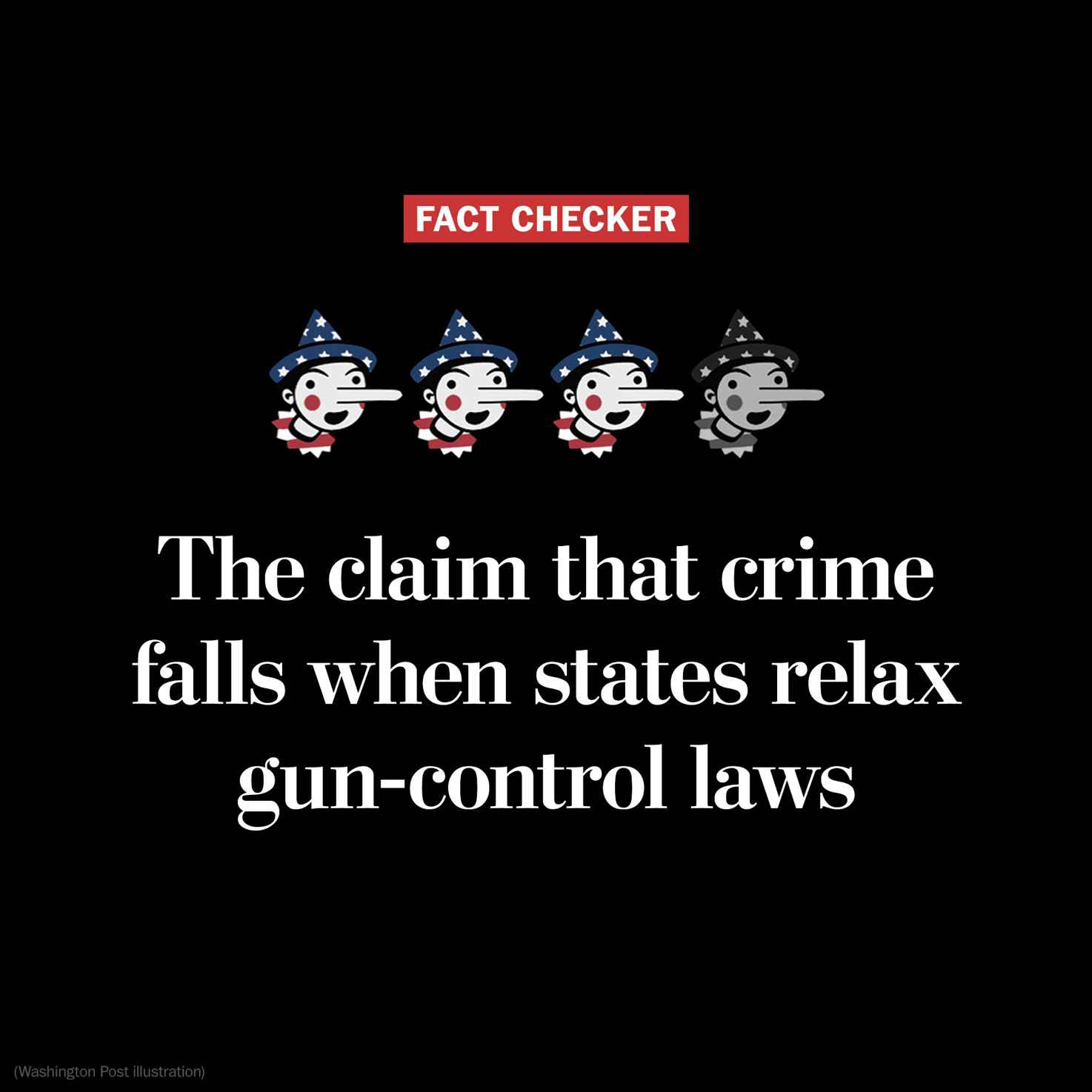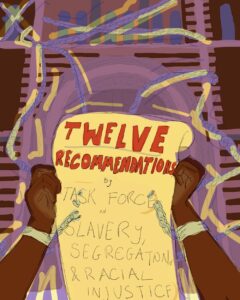“You think that in New York City, people should have considerable freedom to carry concealed weapons. I think that people of good moral character who start drinking a lot and who may be there for a football game or — or some kind of soccer game — can get pretty angry at each other, and if they each have a concealed weapon, who knows? And there are plenty of statistics in these briefs to show there’s some people who do know, and a lot of people end up dead, okay? … What are we supposed to say, in your opinion, that is going to be clear enough that we will not produce a kind of gun-related chaos?”
— Associate Justice Stephen G. Breyer, in a question to Paul D. Clement, attorney for gun-rights supporters, during oral argument before the U.S. Supreme Court in New York State Rifle & Pistol Association v. Bruen , Nov. 3, 2021
“So, Justice Breyer, I would sort of point you to two things that maybe would give you some comfort. I mean, one is the experience of the 43 states, and there are amicus briefs on both sides getting into the empirical evidence, but there really isn’t a case that those 43 states that include very large cities like Phoenix, like Houston, like Chicago — they have not had demonstrably worse problems with this than the five or six states that have the regime that New York has.”
— Clement
The Supreme Court is considering whether a gun-control law in New York unconstitutionally restricts the right to bear arms.
At the heart of this case is a big question: Do Americans have a Second Amendment right to carry guns outside their homes? (The court ruled in 2008 and 2010 that Americans have a right to keep firearms within their homes.)
New York is what’s known as a “may issue” state. Officials have latitude to approve or reject applicants seeking a permit to carry a concealed handgun. Seven other states have similar laws.
The remaining 42 states don’t require permits, or they have “shall issue” laws, meaning officials have no discretion and must approve any applicant who meets the minimum legal requirements (for example, being above 21 years of age and having no felony convictions, pending charges or restraining orders in place).
Which group of states is safer?
This question has been the subject of a fierce academic debate since the late 1990s. One camp says “shall issue” states, with more permissive carrying laws, experience a drop in violent crime. Another group says the opposite: violence increases. Some researchers have found no effect. A fourth group says the existing data and methodologies are incapable of settling the question. More than two dozen studies have been published, with results all over the map.
Clement, a leading conservative lawyer who served as solicitor general of the United States, argued there was no real difference and pointed us to amicus briefs citing studies that found a decrease in crime or no effect from “shall issue” laws. “There really isn’t a case that those 43 states that include very large cities like Phoenix, like Houston, like Chicago — they have not had demonstrably worse problems with this than the five or six states that have the regime that New York has,” he told Breyer.
The Facts
Gun violence is on the rise in the United States, where the rate of gun homicides is much higher than those of peer countries. This year is “on track to be the deadliest year of gun violence in more than two decades,” as noted by a legal brief filed by the police chiefs of 12 U.S. cities.
We’ll break down our analysis into three parts. First, some background on the case and the different kinds of laws in the states. Then, a comparison of homicide rates from 2016 through 2020 for all states, and for the four cities Clement mentioned. Last, we summarize some of the published research on all sides of the debate.
The legal landscape
All states have laws prohibiting people from carrying guns in public places, such as courthouses, banks, bars, churches, hospitals or schools, or at events, such as sports games or demonstrations. These restrictions vary by state.
Sixteen states do not require permits for people carrying handguns in permissible public places.
In 34 states, those who wish to carry a handgun in permissible public places must get a permit from local or state officials, such as a police chief, sheriff or judge.
Twenty-six of those states have “shall issue” laws, which grant permits automatically to qualified applicants over age 21 (or 18 in some states when on active military duty). A typical example would be Nevada, which requires proof of firearms training and bans people convicted of felonies or any crime involving domestic violence or stalking, as well as medical-marijuana cardholders, parolees, fugitives, people declared mentally incompetent and those who were dishonorably discharged from the armed forces.
Eight states — California, Connecticut, Delaware, Hawaii, Maryland, Massachusetts, New Jersey and New York — have stricter, “may issue” laws. Even when applicants meet the minimum requirements, authorities may choose to deny concealed-carry permits based on the reasons given for needing a gun.
New York requires applicants to demonstrate “proper cause,” which courts have defined as a “special or unique danger” that the general public doesn’t face.
In New Jersey, courts have held that the state’s requirement to show a “justifiable need” for a handgun permit means an urgent necessity for self-protection or an ever-present threat of danger. Gun rights advocates in the state complain that virtually no one can clear this bar, so the only people who routinely get handgun permits are retired law enforcement officers who had broad gun-carrying privileges while in service.
Enter Robert Nash and Brendan Koch. The two New York residents separately applied for concealed-carry permits. Nash cited “a string of recent robberies in his neighborhood and the fact that he had recently completed an advanced firearm safety training course,” and was denied a permit, according to the trial court. Koch cited “his extensive experience in the safe handling and operation of firearms and the many safety training courses he had completed,” but no cigar, either.
They’re now challenging the state’s “may issue” law at the Supreme Court. The court’s ruling in the case probably would apply to all states and not just New York.
The FBI crime data
We compared the 42 states that have “shall issue” laws or no permit requirements with the eight “may issue” states, looking at FBI Uniform Crime Reporting data for the five-year period from 2016 through 2020.
The eight states on average had lower homicide rates than the U.S. average all five years. In 2016, the eight-state average was 4.2 homicides per 100,000 people, and the U.S. average was 5.4 per 100,000. In 2020, the eight-state average was 4.9, compared with 6.5 for the entire country.
When comparing only the 50 states, excluding the District of Columbia and U.S. territories, the eight states with stricter gun-control laws still had lower homicide rates on average than the other 42.
We also compared the four cities Clement mentioned in his response to Breyer: Chicago, Houston, Phoenix and New York. Illinois became a “shall issue” state in 2014, and Chicago’s high crime rate cuts against Clement in a significant way, as the graphic below shows.
New York City, the only one of the four in a “may issue” state, had the lowest homicide rate all five years. And it was a fraction of Chicago’s.
The FBI doesn’t publish city-level data, but the gun-control group Everytown for Gun Safety got it by matching figures from the FBI’s Supplementary Homicide Report to “places,” a term for cities used by the Census Bureau.
The last five years of data would seem to disprove Clement’s statement to Breyer, but did the “shall issue” laws have anything to do with the higher homicide rates, or was that due to other factors? The FBI cautions about its data: “Since crime is a sociological phenomenon influenced by a variety of factors, the FBI discourages ranking locations or making comparisons as a way of measuring law enforcement effectiveness.”
That’s usually where science comes in. Surely a researcher somewhere has discovered how to control for differences between states and has found a statistically sound method of settling this debate. Well, buckle up.
The published research
The most popular and interesting stories of the day to keep you in the know. In your inbox, every day.
In 1997, researchers John R. Lott Jr. and David Mustard published an influential study finding that states saw reductions in violent crime after the adoption of “shall issue” laws and that up to 1,500 homicides a year could be prevented by adopting such measures.
The original study analyzed data from 1977 to 1992. Many states adopted “shall issue” laws afterward. Lott later published a book based on his research, “More Guns, Less Crime”; a third edition was released in 2010 with data from 1977 through 2005.
“There are large drops in overall violent crime, murder, rape, and aggravated assault that begin right after the right-to-carry laws have gone into effect. In all those crime categories, the crime rates consistently stay much lower than they were before the law,” Lott writes about the latest data through 2005. “The murder rate for these right-to-carry states fell consistently every year relative to non-right-to-carry states. When the laws were passed, the average murder rate in right-to-carry states was 6.3 per 100,000 people. By the first and second full years of the law it had fallen to 5.9. And by nine to ten years after the law, it had declined to 5.2.”
Lott’s research led to more research, including research into his research. Some academics were able to replicate his findings. Others analyzed the same data he used and came to the opposite conclusion: that violent crime rises. Some have found no significant effect.
The reason? Each study uses its own method of statistical analysis and its own mix of control variables. Although many of these methodologies are similar, and the data in many studies is the same, the results fall across the spectrum.
In an attempt to settle the debate, the National Research Council convened a committee of experts in the mid-2000s to analyze the competing studies. None of them was convincing, the panel said in its 2005 report, in part because minor adjustments to the researchers’ variables or formulas would produce steeply different and strange results. (A separate task force convened by the U.S. Department of Health and Human Services reached virtually the same conclusion in 2005.)
“We conclude that, in light of (a) the sensitivity of the empirical results to seemingly minor changes in model specification, (b) a lack of robustness of the results to the inclusion of more recent years of data (during which there are many more law changes than in the earlier period), and (c) the imprecision of some results, it is impossible to draw strong conclusions from the existing literature on the causal impact of these laws,” the National Research Council report says. In a footnote, the report added that “the correctness of Lott’s arguments is also an empirical question about which there is little evidence.”
Since then, more research has been published, and papers keep landing on all sides of the debate.
“More recent research utilizing a longer time period, more control variables, and more advanced statistical methods suggests that permissive concealed carry laws significantly increase the homicide rate,” said Emma E. Fridel, a criminologist at Florida State University who published one such study last year in Justice Quarterly. “My own study found that the firearms homicide rate increases by 10.8 percent in states with permitless carry or shall-issue laws, in comparison to may-issue states. This controls for a number of other confounding variables, including population size, socio-demographic characteristics, region, crime rates, mental health expenditures, alcohol consumption, etc., as well as levels of gun ownership and other gun laws.”
A 2017 study in the American Journal of Public Health found that “shall-issue laws were significantly associated with 6.5% higher total homicide rates, 8.6% higher firearm homicide rates, and 10.6% higher handgun homicide rates, but were not significantly associated with long-gun or nonfirearm homicide,” based on data from 1991 to 2015.
A 2018 analysis in Econ Journal Watch (critiquing another study) found “there is no evidence that the RTC [right-to-carry, or shall-issue] laws have increased crime. That finding is a negative and agnostic one, and it is in line with what the NRC concluded in 2005.” Another study the same year in Empirical Economics found that “although the passage of right-to-carry laws has no significant effects on the overall violent or property crime rates, they lead to short-term increases in robbery and medium-term decreases in murder rates” after five years.
A 2019 study led by researcher John J. Donohue III of Stanford Law School in the Journal of Empirical Legal Studies analyzed data from 1977 through 2014 and found that “shall issue” laws “are associated with 13-15 percent higher aggregate violent crime rates 10 years after adoption.”
Daniel W. Webster, director of the Johns Hopkins Center for Gun Violence Prevention and Policy, said he and his colleagues are working on a new study “that focuses more precisely on all forms of violent crimes committed with firearms, provides a more nuanced examination of a spectrum of conditions states require in order to issue permits to carry concealed guns, and new statistical methods for estimating the policies’ effects.”
“I can’t share the details now, but I will simply say that our findings are consistent with much of the latest research on the policy question,” Webster said. “While there are differences across states, on average, moving from may- to shall-issue for concealed carry leads to more gun violence.”
We reached out to all the living members of the National Research Council committee listed in the 2005 report. What do they think now?
“To be honest — I would still draw the same conclusion that the NRC panel came to in 2004: that there is no clear-cut answer,” Karen Norberg, a psychiatrist and researcher at the National Bureau of Economic Research, said in an email after reviewing the latest literature at our prompting. “The bottom line is still that results are very sensitive to small variations in the data and the statistical models. No simple answers.”
This was a common refrain from researchers in this camp.
“Unfortunately, what I concluded after three years on the NRC panel evaluating shall-carry legislation was that the data are not up to the task of informing us with science, and therefore decisions about shall carry will have to remain in the realm of politics,” said Terrie E. Moffitt, a psychologist at Duke University. “Generally, our NRC panel found that when scientists had tried to make these comparisons, the differences they found were very small. And the differences could easily be made to come and go with statistical sleight of hand. Thus, two different scientists could use the same data set of counties and come up with opposing conclusions.”
“Imagine a question such as, does the covid vaccine work?” Moffitt added. “It is not informative to test this on a sample of two or three people, or even 100 people, because there are so many other factors operating to influence the outcome that you need a very large number of people to wash those other factors out. … This has got to be tested in thousands of people. Same with gun laws. But, in that realm, we only have 50 states as our units of analysis. Or maybe 3,000 counties. Making this worse, the outcome, which is gun-related-crimes, is not as common as you might think, so we are stuck with small numbers to count as the outcome.”
Joel Waldfogel, an economist now at the University of Minnesota, said: “My sense at the time was that the available evidence on whether shall-issue laws reduce crime was fragile. It was easy to change the number of years considered in the study, etc., and see the results change. … The available evidence did not allow us to draw a conclusion about whether such laws had a detectable, or demonstrable, effect.”
In fact, there’s another survey of studies devoted to how “uncertain” and “inconclusive” this entire body of knowledge remains. The Rand Corp. published it last year.
“Our conclusion was that there is ‘limited’ evidence that shall-issue laws may increase violent crime, but their effects on homicides and other specific violent crimes is ‘uncertain,’ ” said Andrew R. Morral, a senior behavioral scientist at Rand. “Uncertain does not mean these laws have no effect on these outcomes, it means the research that has been done to date is not sufficiently strong as to be able to determine the size or direction of any such effects.
“Our conclusions are a narrow assessment of the causal effects of these laws, a question that is very hard to study precisely. On a more general, and non-causal level, it may be relevant to your reporting to note that people living in the states with shall issue laws are murdered at rates about 40% higher than those living in states with may issue laws. We cannot say this difference is due to concealed carry laws in particular.”
In sum, proving with scientific rigor that “shall issue” laws cause violent crime to rise or fall is a tricky business, but a simple comparison of the data shows that states with looser gun-permit laws have, in fact, experienced higher or “demonstrably worse” homicide rates, as we noted above using five years of FBI data.
We sent questions to Clement and he responded with links to two amicus briefs submitted in the case, both of them basing their arguments on Lott’s research or similar studies that found a decrease in crime or no effect. One brief was submitted by William English, a Georgetown University business professor, and the Center for Human Liberty. The other was submitted by the Republican attorneys general of 26 states. (Neither brief supported Clement’s comparison of Chicago, Houston, Phoenix and New York.)
In response to our questions, Lott said “none of the results claiming a bad effect account for the huge differences in the percent of the population with concealed handgun permits.”
“For example, you have Illinois at 4% and Indiana at over 20%, but because it is so costly to get a permit in Illinois, you overwhelmingly have wealthy whites who live in the suburbs getting permits,” Lott said. “In Indiana, many more people who live in poor, heavily minority zip codes have permits. My research shows that you will get a much greater reduction in crime in areas where the people who are by far the most likely victims of violent crime get permits.”
“The rules to get permits do matter,” Lott writes in his book. “One important pattern stands out. … The states that have passed concealed-handgun permits most recently have made it much more difficult to obtain a permit, and therefore should issue fewer permits overall than states that passed the laws earlier. Later-adopting states had, on average, higher fees for getting a permit (even adjusted for inflation), longer training hours, and older minimum required ages. From the 1980s on, the late-adopting states also have permits with shorter durations.”
He added: “There are two central questions here: 1) Do concealed handgun permit holders themselves cause problems? Do they commit crime? 2) What is the statistical research on the impact of concealed handgun laws? While there is a debate over Question 2, there is no debate over Question 1. You can’t point to any peer-reviewed academic research showing that permit holders are a risk for firearms-related violations. None.”
A 2013 study in the American Journal of Public Health analyzed Texas data from 2001 to 2009 and found that permit-holders “were much less likely than nonlicensees to be convicted of crimes” but that the convictions for the permit-holders “were more likely to involve lower-prevalence crimes, such as sexual offenses, gun offenses, or offenses involving a death.”
The Pinocchio Test
Well, that was a fun fact check.
What we know is the places with looser concealed-carry laws — the “shall issue” and no-permit states — had a higher homicide rate on average during a recent five-year period (2016-2020) than the eight states with stricter permit laws. New York City had a lower homicide rate than the three “shall issue” cities Clement mentioned. Chicago’s homicide rate was five times that of New York last year. That’s the definition of “demonstrably worse.” Clement earns Three Pinocchios.
What role the “shall issue” laws played in these higher crime rates, if any, is unclear. We won’t attempt to settle the academic debate over all the competing studies. The most responsible, factual course would be to acknowledge all the published research rather than cherry-pick from the most favorable studies, as some amicus briefs on both sides of this case do.




